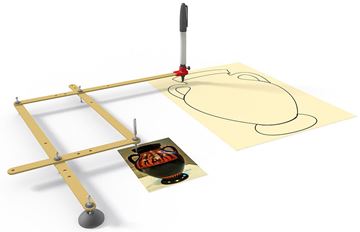Parallelogram
(Jump to Area of a Parallelogram or Perimeter of a Parallelogram)
A Parallelogram is a flat shape with opposite sides parallel and equal in length.
| Opposite sides are parallel | |
|
Opposite sides are equal in length |
|
| Opposite angles are equal (angles A are the same, and angles B are the same) | |
| Angle A and angle B add up to 180°, so they are supplementary angles. |
Play with a Parallelogram:
NOTE: Squares, Rectangles and Rhombuses are all Parallelograms!
Example:
A parallelogram where all angles are right angles is a rectangle!
Area of a Parallelogram
|
The Area is the base times the height: Area = b × h (h is at right angles to b) |
Example: A parallelogram has a base of 6 m and is 3 m high, what is its Area?
Area = 6 m × 3 m = 18 m2
Perimeter of a Parallelogram
The Perimeter is the distance around the edges.
|
The Perimeter is 2 times the (base + side length): Perimeter = 2(b+s) |
Example: A parallelogram has a base of 12 cm and a side length of 6 cm, what is its Perimeter?
Perimeter = 2 × (12 cm + 6 cm) = 2 × 18 cm = 36 cm
Diagonals of a Parallelogram
The diagonals of a parallelogram bisect each other.
In other words the diagonals intersect each other at the half-way point.
Pantograph
Based on a parallelogram, a pantograph can be used to duplicate and resize an image by tracing.

Inside Any Quadrilateral
And there is a parallelogram in any quadrilateral.